I will read any book or poem, watch any movie or show, if within its story there is another story. Like most tastes, this one is hard to explain, but part of it is that the Russian nesting doll structure appeals to my sense of mystery. I read quite a few YA books incorporating this technique at a young age, so its rules feel familiar, and one is that, within a nested structure, the inner story holds a key (or keys) to the outer. Whether it be a clue, a metaphor highlighting theme or vital foreshadowing, the inner story becomes a text to scour for clues. It becomes a mystery box, and as a curious reader, I simply must know what’s inside.
The reason I read so many embedded narratives at a young age is that my favorite writer was YA author Christopher Pike. His books provided an escape hatch throughout my late childhood and early teens from the outsized emotions most of us feel at that age. Alone in my room, I tore through his stories of high school vampires, curse victims, heartbroken lovers, serial killers, and other characters whose problems, though objectively more dramatic, felt on par with my own. As many of Pike’s novels feature stories within stories, I learned to love the device long before I ever thought of becoming a writer myself.
It wasn’t until I wrote my first novel that I considered it from a craft perspective. By then I knew Pike hadn’t invented the embedded narrative; it has a long, illustrious history. You might think that studying it as a writer, rather than letting it wash over me as a reader, would lessen the magic. But for me, the opposite has been true. Incorporating it in my own book prompted me to question the device’s resonance. There are, after all, many to choose from —the red herring, the cliff-hanger, the ticking clock to name a few—so why do I always come back to this one?
The more I thought about it, the more I realized how the nested story structure reflects the centrality of stories in my own life. I have always searched, not just for escape or for entertainment, but for answers, for meaning, in the pages of books—just like the characters who must scour a lost manuscript, secret journal, or other text for clues. The stories I read, the ones I’m told and the ones I tell myself help me make sense of the world, are my greatest teachers and spirit guides. As such, they are the ultimate mystery boxes. I don’t just want to know what’s inside; I need to. The books below feature characters I’ve related to over the years as they search for clues in the stories they encounter within their own.
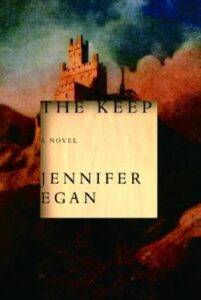
The Keep by Jennifer Egan
“My job is to show you a door you can open,” says Holly, a prison writing teacher and star of the outermost story in Jennifer Egan’s The Keep. The door Holly speaks of exists within our minds, accessed by the reading and creation of stories, a concept particularly tantalizing for her incarcerated students. Holly may enter and exit the jail at will, but she too is locked inside her own narrative of addiction and regret, echoing those of her students. The novel revolves around a seemingly autobiographical story written by one of them; a mind-bending tale about a troubled man tasked with helping his cousin renovate a creepy castle. Reading it, Holly can’t know what of it is “real” and what is fantasy, but by the end of the novel, this seems beside the point.
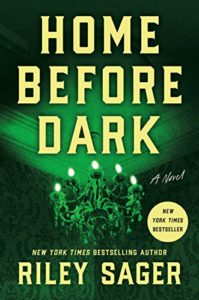
Home Before Dark by Riley Sager
Because I’m a thriller writer, horror reader, lover of all things eerie, this list was destined to skew toward the scary. Home Before Dark by Riley Sager is about a woman named Maggie who returns to the legendarily haunted Victorian mansion she called home for three weeks when she was a child. Her father wrote a hit book along the lines of The Amityville Horror, about the family’s terrifying ordeal there, but Maggie doesn’t believe a word of it. She was too young to remember much of what happened there and blames her father for the long shadow his sensationalized account and the book’s everlasting fame cast over her life. Sager’s novel alternates between her present-day experience in the house and her father’s book, which starts to seem scarily plausible as sinister events unfold. As a reader, I enjoyed searching for clues alongside Maggie as she tries to separate fact from fiction in her father’s pages.
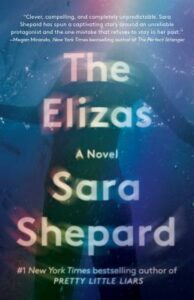
The Elizas by Sara Shepard
The Elizas by Sara Shepard is another novel exploring memory and repressed trauma through a genre lens. Eliza Fontaine is a writer on the brink of publishing her first novel when she’s found at the bottom of a pool in what appears to be a failed suicide attempt. Only Eliza insists she was pushed. What follows is similar in structure to Home Before Dark—alternating chapters portraying Eliza’s reality and sections of her novel, The Dots—but differences in tone, characters and plot highlight the versatility of the device. Without giving too much away, I’ll say that this is a particularly strong example of the rule about a story within a story holding the key to the outer narrative.
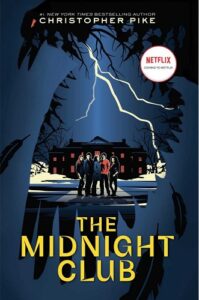
The Midnight Club by Christopher Pike
I was twelve when I first read The Midnight Club by Christopher Pike. It’s not his only book employing the nested story structure, but it’s the freshest in my mind, as I recently revisited it in anticipation of the recent Netflix adaptation. Set in a rambling hospice home for terminally ill teens, a group of five dying friends meets every night at midnight to tell stories. After all these years, I’m happy to report that the book held up. More poignant than scary, it illustrates how stories foster acceptance, strength, and connection in the face of death.
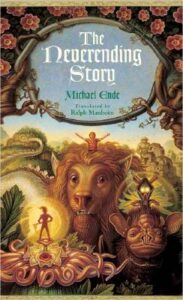
The Neverending Story by Michael Ende
Christopher Pike taught me to love stories within stories, but my first exposure to the device came even earlier with the film adaptation of Michael Ende’s fantasy novel The Neverending Story. (Barret Oliver, who starred as Bastian, was also my first crush.) I didn’t read the book until I was in my thirties, at which point it whisked me right back to the wonder I felt watching the movie as a child. Not only did the story hold up, but it had more wisdom to offer me as an adult, themes I hadn’t picked up on before. It’s about a lonely, bullied boy who stumbles upon a book in which he turns out to play a major role. An epic, imaginative fantasy, it’s also a deeply moving story about grief, loss, and imagination, filled with poetic truths applicable to readers of any age.

One Thousand and One Nights
No list of stories within stories would be complete without mentioning One Thousand and One Nights. Countless versions of the ancient Persian story collection exist but all are about the brilliant storyteller Shahrazad who is forced to marry a king notorious for killing his wife each night and marrying a new one in the morning. To save herself, Shahrazad tells the king a bedtime story but ends on a cliffhanger, forcing him to keep her alive another day. Like many of us, the king simply must know how the story ends, so Shahrazad keeps him guessing until the day he falls in love with her. In an interview with The Atlantic, author Hanan al-Shaykh discusses her re-telling of the classic frame story and why it is “one of the most important and complex historical origins of literature.” She points out how the tales Shahrazad tells the king are about characters who, like her, are pleading for their lives in some way. As he listens, the king learns to empathize with these characters, and by extension, with her. And what better illustration of the humanizing power of stories than that of the woman who saves herself through their telling?
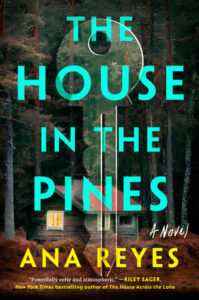
The House in the Pines by Ana Reyes
My first novel weaves many stories together to form the whole. There’s an ancient poem at its heart, “The Hymn of the Pearl,” but even within the fictional world I created, Maya, my main character, is trying to decipher a half-finished novel that her late father left behind. And then churning in the background, there’s the idea that memories, especially old ones, are really just stories that we tell ourselves to keep that warm feeling of nostalgia alive. How reliable are our own memories? And is it the stories within stories that we can’t remember that we need to be afraid of?

















